Results released: The fuel tanks of coastal defence ship Ilmarinen can be emptied in a controlled way
The investigation of the wreck of coastal defence ship Ilmarinen continued in the northern Baltic Sea in the Finnish Exclusive Economic Zone from 12 to 19 August 2024. The objective of the expedition made to the Ilmarinen shipwreck was to determine whether authorities could extract the oil from the wreck and how. The expedition was carried out in cooperation between authorities, including the Finnish Environment Institute (Syke), the Finnish Navy, and Border Guard.
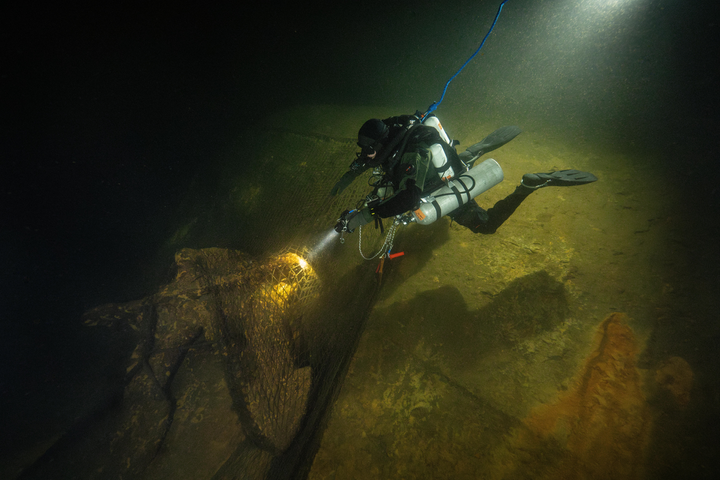
Coastal defence ship Ilmarinen sank on 13 September 1941. The current estimate is that its tanks hold a total of 100,000 litres of light fuel oil.
The results of the expedition investigating the condition of the wreck and the location of the fuel tanks helped to shed light on how best to remove the fuel safely. At the moment, the wreck is leaking a couple of drops per minute. The wreck is covered by a fairly thick layer of corrosion. One risk of the riveted hull is it splitting, which could result in a larger oil spill. This would be particularly disastrous for the nearby Archipelago National Park.
The current state of the wreck was examined with the help of a remotely operated vehicle (ROV) and divers. ROVs are diving robots used to locate and photograph underwater objects. ROV imaging was used to map out the locations of tanks containing oil, which will facilitate a potential oil extraction operation in the future. Imaging was also used to examine the condition of the hull of the wreck and the damage to it. The investigation also made use of remotely controlled imaging devices, hydroacoustic equipment and ultrasound measurements.
Tommi Kontto, Project manager at the Finnish Environment Institute, describes the findings of the investigation as follows: “Corrosion was removed from the surface of the hull in a few spots, revealing an intact steel surface underneath. The hull is riveted, and corrosion can affect the rivets in the seams and the steel sheets in different ways. The oil in Ilmarinen’s fuel tanks is a risk to the delicate and vulnerable Baltic Sea. Based on the results of the investigation, we estimate that the fuel tanks of the wreck can be emptied in a controlled way before the oil leaking from the tanks poses a greater risk to the marine environment.”
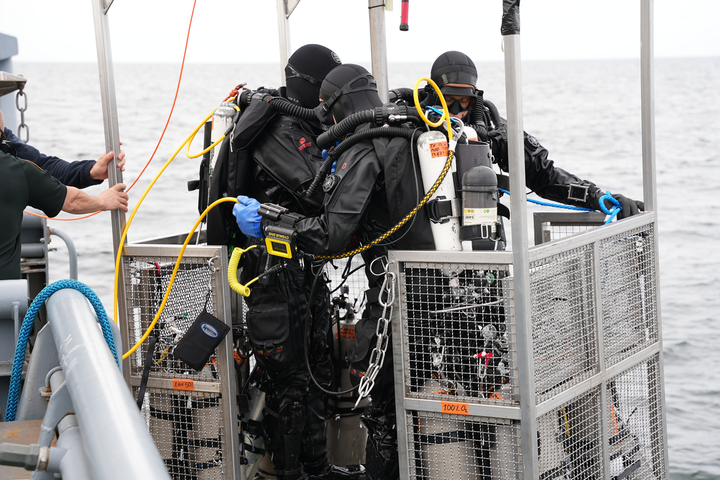
A moment of silence on site in memory of the marines who lost their lives
When Ilmarinen struck a sea mine off the shore of Utö on 13 September 1941, 271 marines were killed in the accident. The sanctity of the grave was one important consideration when planning the investigation. The planning process for the dives involved conversations with the heritage association upholding the legacy of coastal defence ship Ilmarinen, the ecclesiastic representatives of the Defence Forces and the Regional State Administrative Agency responsible for the sanctity of the grave. None of them saw any obstacle to proceeding with the investigation. Before the start of the operation, a moment of silence was held at the investigation site in memory of the marines who lost their lives.
In the wreck, divers did not enter spaces that hold the deceased. The examination of the wreck was superficial and non-invasive.
Draining the fuel tanks of the wreck planned for 2025–2026
The Ministry of the Environment is cooperating with other authorities to support emptying the fuel tanks of the Ilmarinen shipwreck as a joint authority effort. The goal is to extract the oil from the sunken vessel in 2025–2026. The removal of oil from the wreck is funded by the Ahti water protection programme of the Ministry of the Environment (2023–2027). The programme implements the objective of Petteri Orpo’s Government Programme for the protection of waters and the Baltic Sea.
Keywords
Contacts
Project manager Tommi Kontto, Finnish Environment Institute, firstname.lastname@syke.fi, tel. +358 (0) 295 252 278
Media service at Finnish Environment Institute
Our Media Service provides information on research, helps journalists find experts for interviews and provides photos for media use.
Our Communication experts will answer your inquiries on weekdays from 9 am to 4 pm.
Images
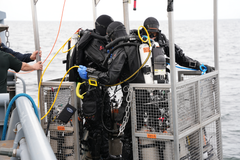
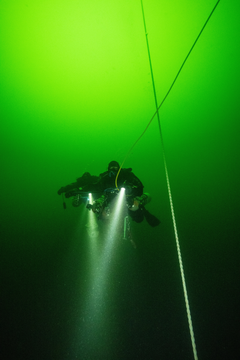
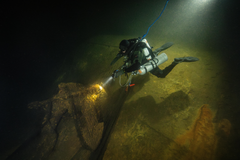
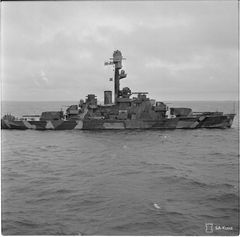
Links
Finnish Environment Institute - We build hope through research.
Finnish Environment Institute
Latokartanonkaari 11
00790 Helsinki
+358 295 251 000
It is time to move beyond solving environmental problems one by one, to systemic sustainability transformations. The Finnish Environment Institute (Syke) contributes to building a sustainable society through research, information and services. The Finnish Environment Institute is a research institute with 700 experts and researchers located in Helsinki, Oulu, Jyväskylä and Joensuu.

Subscribe to releases from Suomen ympäristökeskus
Subscribe to all the latest releases from Suomen ympäristökeskus by registering your e-mail address below. You can unsubscribe at any time.
Latest releases from Suomen ympäristökeskus
Väitös: Pahamaineiset sinilevälajit hyödyntävät kevätkukinnan jälkeistä fosfaattia oletettua vähemmän19.11.2024 08:30:00 EET | Tiedote
Rihmamaiset sinilevälajit, joista osa on myrkyllisiä, hyödyntävät kevätkukinnasta jäljelle jäävää fosfaattia oletettua vähemmän. Tähän tulokseen päädyttiin Mari Vanharannan väitöskirjassa, joka tarkastetaan 22.11.2024. Väitöskirjassa tutkittiin kevätkukinnan jälkeisen planktonyhteisön kykyä hyödyntää ylijäämäistä fosfaattia. Ylijäämäisen fosfaatin ja sinileväkukintojen välisen yhteyden ymmärtäminen on tärkeää sinileväkukintojen riskiarvioiden laatimisessa ja Itämeren rehevöitymisongelman hallitsemisessa.
Fosforläckaget från jordbruket kan minskas med hjälp av strukturkalk och jordförbättringsfiber som uppkommer som biprodukter i industrin14.11.2024 07:50:00 EET | Pressmeddelande
Användning av strukturkalk och jordförbättringsfiber som jordförbättringsmedel minskade erosion från åkrarna enligt en färsk studie. Därmed minskade också belastningen av fosfor på hav, sjöar och vattendrag. Belastningen från tillrinningsområdet minskade med omkring tio procent. På enstaka åkrar sjönk fosforhalterna i vattnet som rinner ut via täckdikena med upp till 70 procent. Strukturkalk och jordförbättringsfiber förbättrar markens struktur, vilket minskar läckaget från åkrarna till vattendragen. Studien visade också att skörden kan bli bättre. Effekterna av jordförbättringsmedel undersöktes för första gången för stora tillrinningsområden på över 100 hektar.
Maatalouden fosforikuormaa vesiin voidaan vähentää teollisuuden sivutuotteina syntyvillä rakennekalkilla ja ravinnekuidulla14.11.2024 07:45:00 EET | Tiedote
Rakennekalkin tai ravinnekuidun käyttö pellolla maanparannusaineena vähensi uuden tutkimuksen mukaan kiintoaineen kulkeutumista pelloilta ja siten myös kiintoaineeseen sitoutuneen fosforin kuormitusta vesiin. Fosforikuorma valuma-alueelta väheni noin kymmenen prosenttia. Yksittäisillä pelloilla salaojavesien fosforipitoisuudet laskivat jopa 70 prosenttia. Rakennekalkki ja ravinnekuitu parantavat maan rakennetta, jolloin huuhtouma pelloilta vesiin vähenee. Tutkimus osoitti myös sadon paranemista. Maanparannusaineiden vaikutuksia vesistökuormitukseen tutkittiin ensimmäistä kertaa laajoilla, yli 100 hehtaarin valuma-alueilla.
Policy Brief: Limiting sulphate load of wastewaters calls for environmental quality standards7.11.2024 07:55:00 EET | Press release
The clean energy transition and the green transition are bringing mining and battery technology industries to Finland. As a result, sulphate discharges into inland waters and the Baltic Sea will increase. Sulphate also has beneficial effects in water bodies, and it is not currently classified as a harmful substance. However, a high local load may adversely affect aquatic organisms, especially in lakes with a naturally low sulphate concentration. In its new Policy Brief, the Finnish Environment Institute issues recommendations for reducing the harmful effects of the sulphate load in wastewaters.
Politiikkasuositus: Jätevesien sulfaattikuorman rajoittamiseksi tarvitaan ympäristönlaatunormit7.11.2024 07:45:00 EET | Tiedote
Siirtyminen puhtaaseen energiaan ja vihreä siirtymä ovat tuomassa Suomeen kaivostoimintaa ja akkuteknologiateollisuutta. Tämän seurauksena jätevesien sulfaattikuorma sisävesiin ja Itämereen kasvaa. Sulfaatilla on vesistöissä myös hyödyllisiä vaikutuksia, eikä sulfaattia nykyisin luokitella haitalliseksi aineeksi. Suuri paikallinen kuorma voi kuitenkin vaikuttaa haitallisesti vesieliöstöön etenkin järvissä, joissa sulfaattia on niukasti. Suomen ympäristökeskuksen uusi Policy Brief -julkaisu antaa suosituksia jätevesien sulfaattikuorman haittojen vähentämiseksi.
In our pressroom you can read all our latest releases, find our press contacts, images, documents and other relevant information about us.
Visit our pressroom